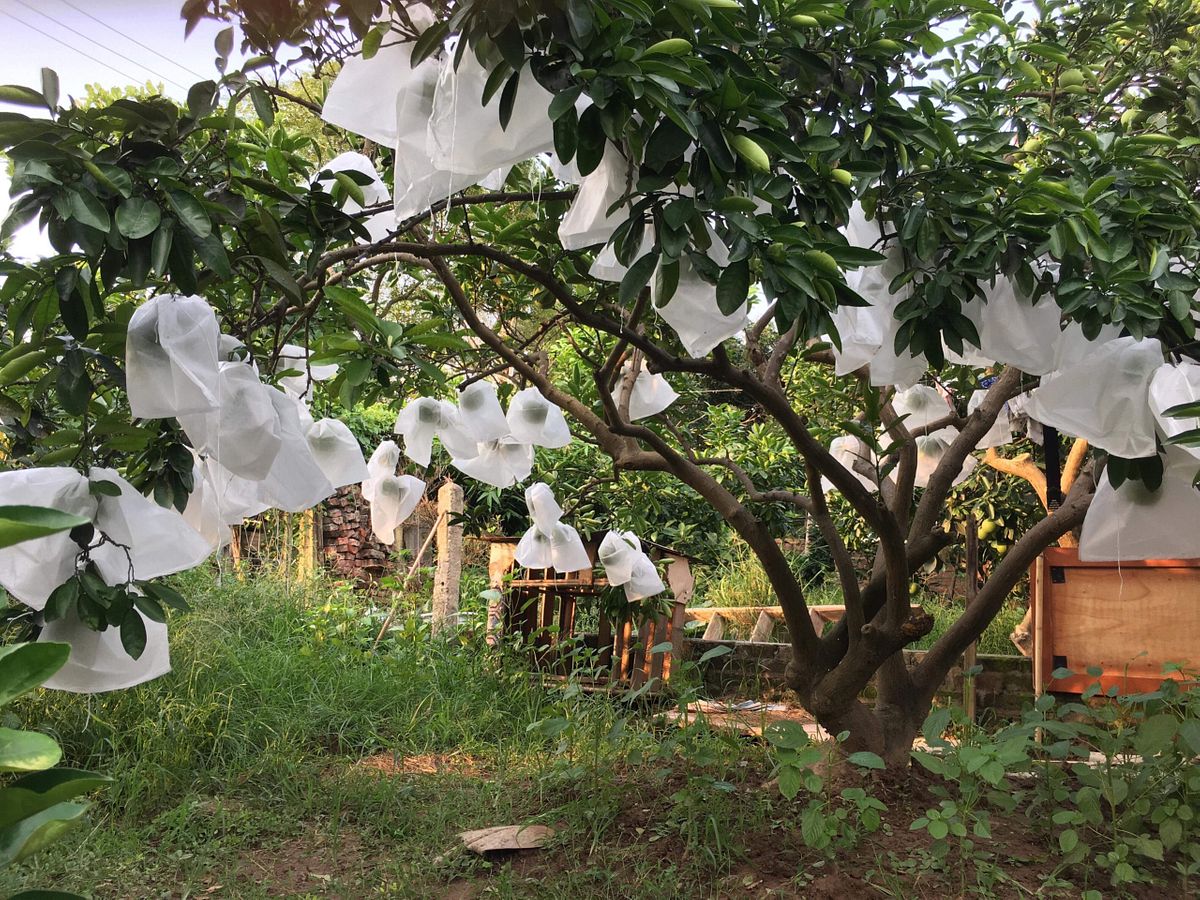Rats, mice, mosquitos, snakes, centipedes, caterpillars, snails, beetles and slugs: the more fertile a region is, the more pests inhabit it.
It’s the trade-off for being able to have a juicy clutch of mangoes growing in your front yard; recline year-round in a veranda hammock; and fill a vase with freshly blooming flowers for next to nothing. If such a tropical setting is amenable for humans why wouldn’t it be for other creatures, after all? What makes you think you’re any different from a black–headed coconut caterpillar (Opisina arenosella Walker)?
I love the Mekong Delta and find every opportunity I can to travel there. Every arrival feels celebratory, not because the streets are lined with flags, banners, bands and parade revelers. It’s more subtle than that: trees with fruits ripening in plastic bags.

To protect against bugs and scavenging pests, ancient Japanese farmers would sew delicate silk bags to place around fragile fruits. The need to foil insects and rodents remains today, but cheaper options have emerged. Plastic, paper and mesh now encircle ripening mangoes, apples, and pomelos. The practice exists throughout Vietnam, but given the Mekong Delta’s deserved reputation as the nation’s most nourishing orchard, one notices it more frequently there. A plump jackfruit gathers sweetness in its flesh the way support gathers for a revolution. A mesh bag keeps it safe.
Seeing trees with dangling, semi-transparent bags like complex orbs of woven whiskers fills me with gratitude. Gratitude for the farmers who are finding a way to make a living. Gratitude for fruits grown without excessive chemicals and pesticides. And most of all, gratitude that my dessert was won over the best efforts of insects. It’s the tiny triumphs that can unite humanity.
Vignette is a series of tiny essays from our writers, where we reflect, observe, and wax poetic about the tiny things in life.















